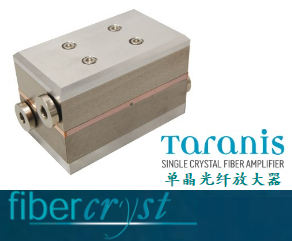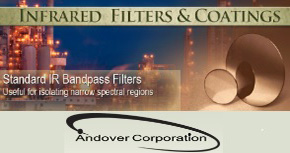Our core expertise is Fourier Transform Spectroscopy (FTS), with a particular focus on the far-infrared spectral range and a strong heritage in ground and space based astronomy. Due to their high efficiency and variable spectral resolution, single pixel FTS are the instruments of choice for many precision spectroscopic applications. Recent advances in detector array technology have also led to the emergence of imaging FTS as a leading contender in the field of hyperspectral imaging.
We have extensive experience with the mechanical, optical and electronic design, as well as scientific data analysis required for producing custom FTS instruments optimized for any application. We have built a wide range of spectroscopic systems from visible to submillimetre wavelengths (see our Products and Services pages for more details). Our FTS systems provide the highest commercially available optical throughput, which is of particular importance in the energy starved submillimeter spectral region.
Building on this pedigree, we also offer source, detector and full instrument calibration services for the mid-infrared, terahertz and sub-terahertz spectral range at resolving powers up to 10,000 from room temperature to 4K.
Hyperspectral Imaging
Imaging Fourier Transform Spectrometers
Hyperspectral imaging is an emerging technology with a very bright future. Multispectral imaging systems typically have a few spectral bands, sufficient to provide only qualitative information on a scene. Hyperspectral imagers, in contrast, can have many thousands of spectral channels, which allows for much more detailed analyses of the scene contents. Hyperspectral imagers have become more affordable in recent years as the price of detector arrays has dropped considerably in many spectral ranges. When a monochrome imaging array is coupled to a Fourier transfrom spectrometer it produces a spectral data cube having two spatial and one spectral dimension that can be analyzed in a variety of ways.
Based on its expertise in Fourier transform spectrometers, Blue Sky Spectroscopy develops custom hyperspectral imagers at reasonable costs for various spectral ranges – from the visible to the far-infrared. In particular, we target hyperspectral imagers in the Terahertz range, which represents one of the last unexplored regions of the electromagnetic spectrum.
The table below summarizes technical characteristics of some of the imaging spectrometers we can offer. The availability of suitable detector arrays is the basis for the development of imaging FTS systems. All system parameters can be tailored to the application in question.
| Wavelength range | Resolving power | Array size [pixels] | Spatial resolution |
|---|
| Visible to Near-Infrared: 400 – 1100nm | 250 | 80 x 80 | Variable by using standard zoom lenses |
| Mid-Infrared: 8 – 12μm | 50 | 120 x 160 | 7 x 7arcmin in a 15 x 20° field of view |
| Terahertz: 0.1 – 3 THz | ~1000 | 60 x 80 | . |
Processing and analyzing imaging FTS data
Complementing the hardware development we provide software tools to effectively process, analyze, and manage the data volumes resulting from hyperspectral imaging. An example of our expertise in this area is the Data Processing and Science Analysis Software Centre for the SPIRE imaging FTS, an instrument on the European Space Agency’s Herschel mission, a far-infrared and submillimetre space observatory.
 Herschel is a cornerstone mission of the European Space Agency, successfully launched on May 14 2009. Its scientific payload includes three instruments, among them SPIRE, the Spectral and Photometric Imaging Receiver. SPIRE features a two-band imaging FTS for the wavelength ranges from 200 to 300μm and 300 to 670μm respectively, based on arrays of NTD spiderweb bolometers. The mission ended after the spacecraft exhausted its cryogen supply on April 29 2013. Blue Sky Spectroscopy develops and maintains the data processing software for the SPIRE imaging FTS under the technical authority of the Canadian Space Agency.
Herschel is a cornerstone mission of the European Space Agency, successfully launched on May 14 2009. Its scientific payload includes three instruments, among them SPIRE, the Spectral and Photometric Imaging Receiver. SPIRE features a two-band imaging FTS for the wavelength ranges from 200 to 300μm and 300 to 670μm respectively, based on arrays of NTD spiderweb bolometers. The mission ended after the spacecraft exhausted its cryogen supply on April 29 2013. Blue Sky Spectroscopy develops and maintains the data processing software for the SPIRE imaging FTS under the technical authority of the Canadian Space Agency.
 We have extensive experience with a large range of infrared and Terrahertz detector technologies, which allows us to design systems optimized for any application and budget. Our corporate partner, QMC Instruments, is a world leader in the development and fabrication of cryo-free THz detector systems and supporting technologies.
We have extensive experience with a large range of infrared and Terrahertz detector technologies, which allows us to design systems optimized for any application and budget. Our corporate partner, QMC Instruments, is a world leader in the development and fabrication of cryo-free THz detector systems and supporting technologies.
NTD Germanium and spiderweb bolometers, HgCdTe, InSb, CCDs
From single pixel bolometers to HgCdTe and Golay cells, we can provide detectors, matched cryogenics, and low noise electronics tailored to your application.


Blackbody calibration sources from 77 to 1000 K, from 20 to 2000 µm
Calibration is a key aspect of any scientific instrumentation. We can provide custom and commercial blackbody calibration systems, with wavelength ranges from the submillimetre to the infrared.
Infrared Radiometers
We offer compact, moderate cost, zero maintainance, highly reliable, and high accuracy radiometers. Radiometers, detecting the 20µm emmission from rotational transitions of water vapour with a simple Mercury, Cadmium, Telluride (MCT) detector, can serve as atmospheric water vapour monitors for current and future ground-based observatories. These systems require only a very small amount of low power electronics to amplify and read the signal. Small cryocoolers and a compact optical design allow for simple interfaces to the instrument.
 BTRAM, the Blue Sky Spectroscopy Transmission and Radiance Atmospheric Model, is a fast, fully customizable, line-by-line, layer-by-layer radiative transfer model based on the HITRAN 2012 molecular line database.
BTRAM, the Blue Sky Spectroscopy Transmission and Radiance Atmospheric Model, is a fast, fully customizable, line-by-line, layer-by-layer radiative transfer model based on the HITRAN 2012 molecular line database.
The product of over 15 years of development and testing, BTRAM provides line-of-sight transmission and emission spectra for fully customizable atmospheres and gas cells over wavelengths ranging from the visible to the extreme infrared at variable spectral resolution. Running on a PC, BTRAM quickly produces accurate results through a convenient graphical user interface.
Transmission, emission, and opacity are modeled along a line of sight for radiation at wavelengths above 500nm. The user can specify the spectral resolution of the model, limited by the available RAM and computation time. The model spectrum can be convolved with a user-specified instrument line shape.
The user has a choice of modeling radiative transfer of an atmosphere or simulated gas cell. The Earth’s atmosphere is modeled in three different sections: 0 to 12km, 12 to 30km, and 30 to 50km. Within these sections, atmospheric layers can be customized by the user. Nine pre-defined atmospheric profiles are included, six of these are equivalent to the standard atmospheric models found in FASCODE. The atmospheric model has been successfully validated against FASCODE. Radiative transfer through a gas cell allows users to select a mixture of gases from a list of 37 common gases, or simply to model a short path of atmosphere at constant pressure and temperature.
The particular strength of BTRAM is to provide results quickly through a flexible and user friendly interface. Simulations can be based on individual parameter selections or on a batch process that iterates through a one-dimensional parameter space at a user-defined interval. The Graphical User Interface allows users to click to zoom into results and auto-scale axes. Commonly used units (cm-1, GHz, μm, nm) are available for the spectral dimension. A comprehensive online help system and a stand-alone user manual are available. Results can be printed and stored in ASCII or the open SPC® data format.
BTRAM runs under the IDL Virtual Machine® on Windows XP, Vista, and Linux. The purchase of third-party software is not required.
Download BTRAM
Download the latest version, BTRAM 3.9.3, now.
Related Publications
Detailed description of the radiative transfer model from the original thesis work.
Querel et al. 2008 model the transmission through the atmosphere at the site of the Las Campanas observatory and compare it to measurements with an optical echelle spectrograph.
Spencer et al. 2004 model the transmission through the atmosphere in the instrument test and integration facility to analyze data from the ground test campaign of the Herschel/SPIRE instrument.
Chapman et al. 2004 model the transmission through the atmosphere above Mauna Kea, Hawaii, to validate an infrared radiometer against SCUBA.
Specifications and Requirements
| Spectral range | λ>500nm, from the visible to the submillimeter |
| Spectral resolution | User selection, <100,000 spectral elements |
| Line database | HITRAN 2012 |
| Pre-defined atmospheric models | Tropical, Mid-Latitude (Summer and Winter), US Standard, Subarctic (Summer and Winter), Antarctic Summer, Chajnantor Winter, Mauna Kea, Antofagasta Summer |
| Available gases | H2O, CO2, O3, N2O, CO, CH4, O2, NO, SO2, NO2, NH3, HNO3, OH, HF, HCl, HBr, HI, ClO, OCS, H2CO, HOCl, N2, HCN, CH3Cl, H2O2, C2H2, C2H6, PH3, COF2, SF6, H2S, HCOOH, HO2, O, ClONO2, NO+, HOBr, C2H4, CH3OH, CH3Br, CH3CN, CF4 |
| Compatible operating systems | Linux, Windows 7 and newer |
| System requirements | ~180MB of disk space, at least 1GB RAM |
 Herschel is a cornerstone mission of the European Space Agency, successfully launched on May 14 2009. Its scientific payload includes three instruments, among them SPIRE, the Spectral and Photometric Imaging Receiver. SPIRE features a two-band imaging FTS for the wavelength ranges from 200 to 300μm and 300 to 670μm respectively, based on arrays of NTD spiderweb bolometers. The mission ended after the spacecraft exhausted its cryogen supply on April 29 2013. Blue Sky Spectroscopy develops and maintains the data processing software for the SPIRE imaging FTS under the technical authority of the Canadian Space Agency.
Herschel is a cornerstone mission of the European Space Agency, successfully launched on May 14 2009. Its scientific payload includes three instruments, among them SPIRE, the Spectral and Photometric Imaging Receiver. SPIRE features a two-band imaging FTS for the wavelength ranges from 200 to 300μm and 300 to 670μm respectively, based on arrays of NTD spiderweb bolometers. The mission ended after the spacecraft exhausted its cryogen supply on April 29 2013. Blue Sky Spectroscopy develops and maintains the data processing software for the SPIRE imaging FTS under the technical authority of the Canadian Space Agency.












